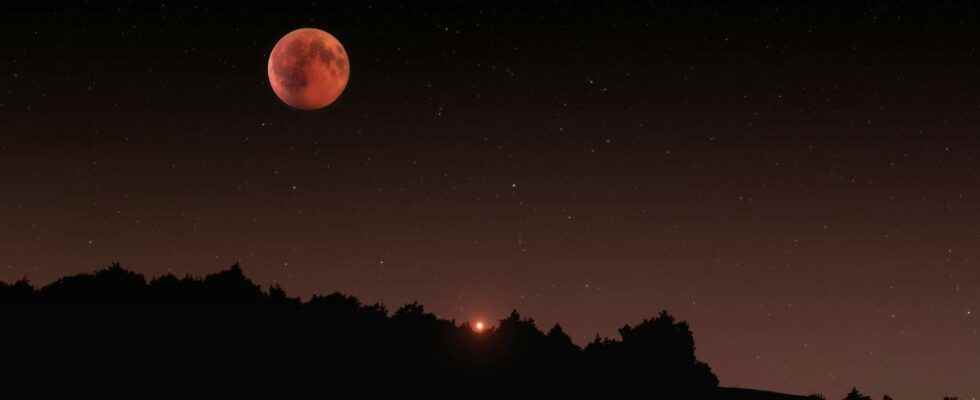As part of a participatory science program, while the objective was to detect polar auroras on Mars, French amateur astronomers observed and photographed a 3,000 kilometer cloud in the upper atmosphere of the Red Planet, “at the gates interplanetary void. This discovery is the subject of a publication in the journal Astronomy Astrophysics.
You will also be interested
[EN VIDÉO] 15 things to know about Mars While 3 missions are currently on their way to Mars, we invite you to learn a little more about the red planet. Here are 15 things to know about Mars.
Currently only the amateur astronomers globally and continuously observe Mars when the planet is closest to Earth (“opposition”). A part of these passionate was added to the monitoring program initiated by Jean Lilensten, research director at Ipag, and Jean-Luc Dauvergne, amateur astronomer. In 2018, they set up a network of ten observers spread over all continents.
On November 17, 2020, the French Christophe Pellier and Emmanuel Beaudoin detected and photographed, for three hours, a huge cloud structure emerging from the night at the terminator. This discovery illustrates serendipity in science because the initial goal of the program was to detect polar aurora on Marsand not to study the clouds.
A huge cloud structure at the gates of the interplanetary vacuum
What has been observed here is atypical for two reasons: the cloud complex is gigantic, with an extent of 3,000 kilometers, and is located at an altitude of 92 kilometers, at doors interplanetary void. The altitude was evaluated by two independent methods, in particular by Marc Delcroix, head of the planetary observation commission of the SAF (Astronomical Society of France).
the cloud scatters light at all visible wavelengths, with a maximum in the red, which suggests that it is composed of micrometric particles. The dust hypothesis could be ruled out, on the other hand crystals of water ice or dry ice are good candidates. From water ice clouds have already been observed at this altitude and at this season, but with smaller ice crystals. The observed particle size is consistent with the CO hypothesis2, however, the observing season is atypical. It is therefore not possible to decide between these two hypotheses.
At the same time on November 17, 2020, a dust storm was in development on Mars. The authors question the possibility that this activity participated in the formation of this atypical cloud structure.
Interested in what you just read?
